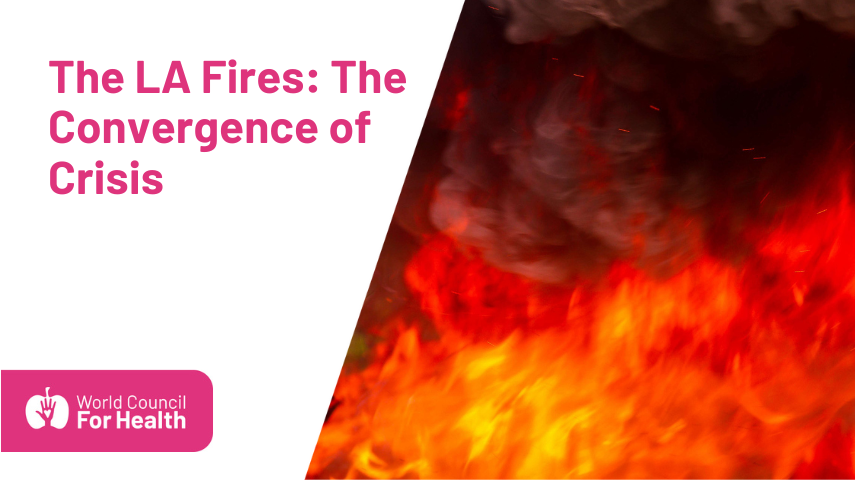The recent fires that are ravaging Los Angeles and its surrounding areas are the most destructive fires in the area’s history. Multiple regions across the state have suffered significant damage. The fires, fuelled by dry conditions, high winds, and the ongoing drought, have ravaged both rural and urban areas, destroying thousands of homes, businesses, and natural landscapes.
When we connect the dots between land acquisitions, fire insurance cancellations, high speed rail proposals and water depletion, a disturbing pattern begins to emerge and evidence that points to manipulation of these key elements is mounting.
Max Lowen, mother of a Malibu resident explains:
‘So many people have lost everything. My daughter had to move out of her home and stay with her friend further south in San Diego, her condo complex is still standing but the restaurant where she works has closed and she is now out of a job, and she doesn’t know if her university burned down or if she can return to her studies next month. She can’t go back because they don’t have power or water in that area…’
Fire Insurance Cancellations
Many homeowners and renters have been reporting that months before the fires broke out, their fire insurance policies were suddenly cancelled or not renewed. In other cases, homeowners were informed that their premiums would increase dramatically, making insurance unaffordable or unattainable.
Why would insurance companies take such drastic steps, knowing that wildfires are a regular occurrence in California? With no insurance to cover the damage, property owners may be forced to sell their land at a fraction of its value and reports are already indicating that offers have been received from speculative developers.
The Two Year Rebuild Mandate
After a major wildfire, California law mandates that property owners must rebuild their homes within a specific timeframe — usually within two years of the destruction. While this policy is framed as a way to ensure communities are restored and to preserve property values, it creates significant burdens for those who have already suffered a catastrophic loss. Many homeowners cite that a completing a rebuild within two years is near impossible in the state. This coupled with the fact that owners are left without insurance or the financial resources to rebuild, especially when their insurance was cancelled or denied months prior to the disaster, is added stress for all concerned.
Low Water Reserves and Ruthless Land Acquisition
California has faced ongoing droughts for years, with water scarcity becoming a critical issue. Concerns have been raised that there was a deliberate effort to deplete water reserves prior to the fire season, with local reports suggesting that reservoirs were emptied of water and hydrants empty. If this is true, why were attempts being made to sabotage the work of the firefighters?
Another element that cannot be ignored when analysing the landscape of the California wildfires is the alignment of fire paths with the proposed routes for California’s ambitious High-Speed Rail project. Paths of the fires and the proposed rail routes seem to be similarly aligned.
The sprawling hills and canyons of Los Angeles are some of the most valuable and desirable pieces of real estate in the world. It’s clear that developers are increasingly interested in acquiring large swathes of land in areas that are prone to wildfires. The fires evidently create an opportunity to “clear” vast areas of property for future development.
Fire-prone areas, especially in places like Malibu, Calabasas, and Topanga Canyon, have become prime targets for land acquisition. After a fire rips through a neighbourhood, it creates a “clean slate”. This makes it easier for large corporations and developers to swoop in and buy up the land at significantly reduced prices.
An element that cannot be ignored when analysing the landscape of the California wildfires is the alignment of fire paths with the proposed routes for California’s ambitious proposed High-Speed Rail project.
Climate, Climate, Climate
The climate agenda is being pushed and clearly feeds into the narrative with US Governing officials adding flames to the fire. Poor land management, excessive regulation, and an overemphasis on environmental policies have exacerbated the problem in California, with the Governor Gavin Newsom’s rhetoric regarding wildfires and climate change a key part of a broader agenda to push a narrative of climate alarmism. Newsom and his contemporaries appear to be using ‘climate change’ as a political tool to justify costly policies and regulations that benefit certain industries, push an agenda of government control, and advance corporate interests under the guise of environmentalism.
By constantly attributing the crisis to external forces such as ‘climate change’, the government and corporate entities can avoid blame for the role they played in exacerbating the problem. The public is thus conditioned to accept the crisis as an unavoidable part of the natural order, making it easier for elites to push through policies that consolidate their control over water resources and land.
As the fires continue to rage, as with the devastating floods in Spain last year, it is crucial that we ask ourselves whether we are witnessing the effects of a natural disaster—or a calculated scheme that benefits a select few while leaving the rest of the population in the ashes.








